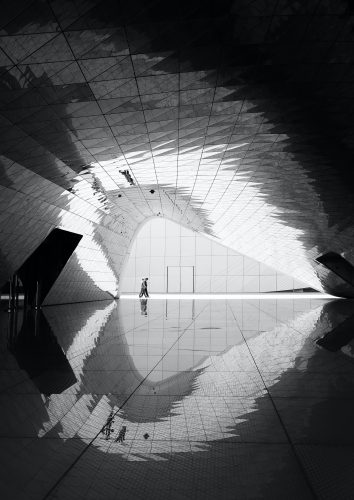A Quick Tip: Gaining Perspective
Today we have yet another quick tip from our friends over at Picture Correct and this one comes straight out of their best-selling Photo Tutorial eBook.
In life, the older you get, the more of a seasoned perspective you develop. The passage of time alone can imbue a kind of wisdom on us.
Unfortunately, if you don’t know what you’re doing in photography, nothing will change no matter how much time passes. Perspective, as far as a camera is concerned, is an entirely different thing.

Do you really know what an image’s perspective is?
To be fair, it’s not the easiest thing to understand.
In photography, perspective refers to how three-dimensional objects interact on a two-dimensional plane. Perspective forces us to see things from the eyes of another artist helping us become the photographer in the moment the capture was made. As such, it is one among many ways that a photographer can use to convey meaning and depth in a photograph.
When photography uses interesting perspectives, it can force the viewer to look at the world in unique and unusual ways. It might even challenge our very notions of what a properly composed photograph should look like. In other words, it is a way to share the way you view the world with the world.

And, as we discussed in The Photo Tutorial eBook, getting the right perspective is fundamental to creating an image that works visually and conceptually.
What’s the key to this process?
Experimentation.
When you experiment with how subjects look through your camera, you end up creating more engaging images that compel the viewer to pay attention.
Think of this in opposition to flat images with a straight-ahead perspective. Though this can work, it doesn’t work every single time.

Take this photograph for example. The framing, the cavernous nature of the building, and the reflections all lead the viewer’s gaze directly to the photographer's subject.
Using such an environment helped create an engaging composition.
Yet perspective is about much more than making things look cool. Photographs tell a story and controlling this narrative in terms of how the scene is viewed helps convey a message to your audience.

Take this image, for example, where all of the undulating curves converge and surround a singular person thus making him the protagonist of the story unfolding within the photograph.
Looking at him with his relaxed pose, in the context of the framing structures around him gives the viewer the feeling of being embraced by these books and perhaps comforted by the knowledge surrounding him.
See what we mean?
Here’s a fun exercise you can try: Take a look at some of your favorite pictures. What visual cues can you see that influence how you feel about and interpret the photograph?
If you want more insights just like this, be sure to check out Picture Correct’s best-selling Photo Tutorial ebook!